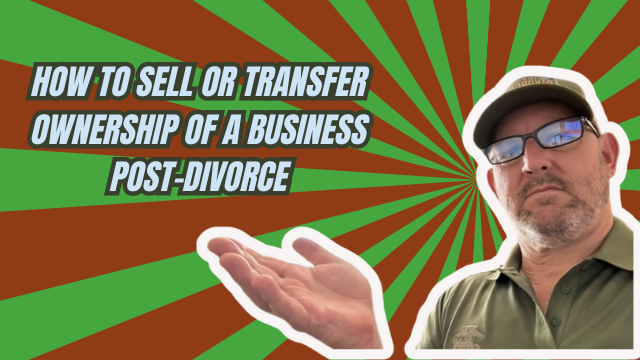How to Manage Shared Business Ownership Without Conflict After Divorce
Divorce is never easy, but when a shared business is involved, the challenges multiply. Navigating the complexities of separating a business partnership alongside personal separation requires careful planning and clear communication. Drawing on expert insights from Tim Blankenship of Divorce661, this guide will help you manage shared business ownership post-divorce—preserving your professional interests and fostering a peaceful transition.
Why Managing a Shared Business Post-Divorce is Complex
When spouses co-own a business, divorce introduces emotional and financial hurdles that can threaten both the relationship and the company’s future. Without a solid plan, conflicts over ownership, profit sharing, and decision-making can arise, potentially damaging what you’ve built together. It’s crucial to approach this situation with a structured strategy that protects both parties’ interests and the health of the business.
Deciding Who Keeps the Business: Buyouts and Valuations
One of the first questions to address is whether one spouse should buy out the other. This process starts with obtaining a professional business valuation to determine the fair market value. A clear valuation ensures that any buyout is equitable and transparent.
If paying a lump sum isn’t feasible, consider structured payout plans. These allow for gradual compensation over time, easing financial strain while facilitating a smooth transition of ownership.
Co-Owning After Divorce: The Importance of a Detailed Partnership Agreement
In some cases, divorced spouses choose to continue co-owning the business. To avoid misunderstandings and conflicts, it’s essential to establish a comprehensive partnership agreement that covers:
- Roles and Responsibilities: Clearly define who is responsible for what within the business.
- Profit Splits and Income Reporting: Specify how profits are divided and how income is reported for tax purposes.
- Exit Strategies: Outline the terms and conditions under which one party can exit the business.
- Communication Boundaries: Set clear guidelines for professional communication to separate personal feelings from business decisions.
- Dispute Resolution: Include processes for resolving conflicts amicably without jeopardizing the business.
Real-Life Success: A Marketing Agency’s Smooth Transition
To illustrate, we helped two ex-spouses who co-owned a marketing agency. By crafting a detailed business agreement that laid out roles, profit sharing, and exit terms, they managed to continue working together without conflict. Their experience proves that clear agreements are key to maintaining both professional success and personal peace.
Financial Clarity: Keeping Business and Personal Finances Separate
Another critical aspect is ensuring the divorce judgment explicitly states how business income is reported and how profits are shared. Mixing personal and business finances can lead to confusion and disputes. Keeping these accounts separate safeguards clarity and accountability in both your personal and professional lives.
Key Takeaways for Managing Shared Business Ownership Post-Divorce
- Decide on Ownership: Determine if one spouse will buy out the other or if you will continue co-owning.
- Get a Professional Valuation: Know the true value of your business to facilitate fair financial arrangements.
- Create Clear Agreements: Draft detailed partnership agreements covering roles, profits, communication, and exit plans.
- Separate Finances: Keep personal and business finances distinct to avoid misunderstandings.
- Plan for Disputes: Include dispute resolution processes to handle conflicts professionally.
Moving Forward with Peace and Productivity
Managing a shared business after divorce doesn’t have to mean ongoing conflict or losing what you’ve worked hard to build. By implementing a structured plan, you protect your interests and create a professional environment conducive to growth and harmony.
If you’re facing the challenge of co-owning a business with your ex, expert guidance can make all the difference. At Divorce661, we specialize in creating bulletproof agreements and strategies tailored to your unique situation—helping you move forward with clarity and control.
Ready to take the next step? Visit Divorce661.com for a free consultation and learn how to structure your post-divorce business plan for success.




